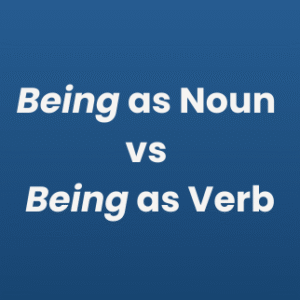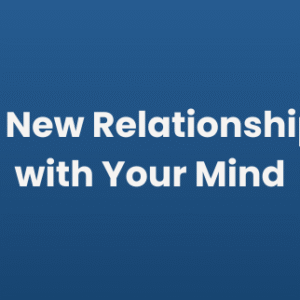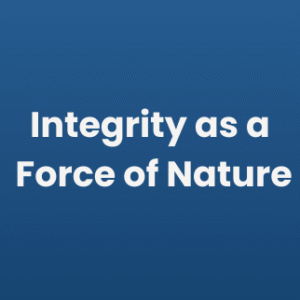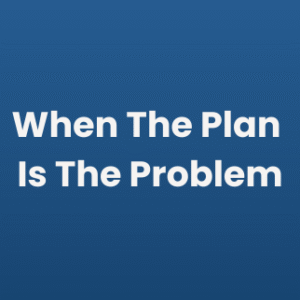The Journey So Far
This week, I reached a modest but meaningful milestone: I delivered the 3,000th coaching session of my career. It’s a moment that might have passed without public reflection, had it not been for the encouragement I received from Ed Batista to pause, look back, and take stock.
The Early Years
I first started having conversations that could be called a rudimentary form of coaching in 2015 when I was the Vice Chairperson for a 1500-member professional chapter of engineers.
I did my first formal training in coaching in 2019, while still working as a specialist consultant with Deloitte. At this time, I was used to documenting anywhere between 45 to 60 hours of work each week. So when I became a full-time professional coach later in the same year, I thought I would continue a similar work schedule. Soon, I found out that being a coach involved a lot more than just coaching sessions. There was a lot of behind the scenes work – from managing a business to managing my energy and well-being, all of which had a direct impact on how present and impactful I could be with my clients.
For the past six years, since leaving my consulting role, one-on-one professional coaching has been the only thing I’ve done. The only exceptions to this were a few corporate group interventions and the ‘Coaching for Higher Impact’ program I did in 2024 to help professional coaches increase the impact of their coaching.
In 2020, when I first pursued formal credentialing with the International Coaching Federation (ICF), I had around 250 hours of professional coaching experience.
The two years that followed had barely anything going on in my life other than becoming a better coach. I was young, I had a lot of energy, little family responsibility and a healthy obsession with coaching. I decided to treat my pursuit of coaching mastery like a rigorous MBA from a premier B-school. I continued my work-week like I would if I was in a full-time job, spending 6-8 hours in meetings each day and when I wasn’t in one, I would study.
I worked across time zones, taking meetings at odd hours on a fully open calendar, and using the time in between to undergo further training. I would wake up at 2 AM on a Tuesday morning to receive coaching for myself, and I literally couldn’t sleep, with most of my mentors and peers being in North America, Europe and the UK, while I was living in India. Weekends would be spent reading research papers and doing open courses on leadership and neuroscience from Universities like UPenn and Case Western Reserve.
This professional journey ran parallel to a deeper, spiritual one, which is a story I explore more fully in this podcast conversation.
The Later Years
Later in 2022, when I upgraded to a senior credential with the ICF, I had 975 hours of coaching experience. Just after this, seeing that the pandemic had ended, I moved back to Hyderabad and joined the ICF Chapter, later taking on a role on their Board of Directors. This was a rich period of collaboration where I formed nurturing friendships with several colleagues, including Ranjith Reddy, with whom I co-authored ‘The Rise of Manager as Coach‘, and Sudha Krishnan, whose kindness and humility I deeply appreciate.
Sometime in 2024, I decided to move to the beach town of Goa on the western coast of India, for its quaint lifestyle, which I found to be more suited to my temperament. My commitment to the now ICF Hyderabad Charter Chapter continued, and our work culminated in organizing the ICF India Coaching Conclave in 2025.
Standing on the stage in a room filled with arguably some of the country’s most qualified coaches, I was once again faced with the evidence for an insight I had long held: that no one else had the definitive answer, and that the only true path forward was the one I created for myself. It’s the same daunting and liberating frontier every leader eventually reaches when they realize their own journey requires a map that has not yet been written.
While on vacation on a small island in south-east Asia, I let this realization lead me to writing a whitepaper, ‘The Standard Bearer’s Dilemma: Re-examining Mastery in Professional Coaching‘. I saw that if I was to create my own journey forward, I first had to deconstruct the map that was given to me.
It is in frontiers like these that the value of a thought-partner becomes most clear. Throughout this journey, my priority was to be coached as much as it was about gaining experience coaching. There is nothing that can replace the experience of being in conversations with leaders week after week. But being in conversations on the other side of the table with a great coach to support and challenge comes close.
For this, I owe my gratitude to Michael Neill, Wyn Morgan and Dominic Scaffidi. I stand on the shoulders of giants, and my coaching wouldn’t have been half as impactful without their generosity and investment in my growth.
Michael helped me embody and integrate the spiritual grounding necessary for deep impact, both for me personally and in service of my clients. Wyn helped me translate and apply this understanding into business impact and tangible results. Dominic helped me develop my own artistry and style of coaching in how I create this impact.
It was in being a client that I truly learned what it means to be a coach. That experience is the foundation for what follows. I’ve found that the deeper you go into this work, the fewer certainties you find. This is a snapshot of my practice in evolution.
The Evolution of My Craft
From Technique to Presence
My early days were focused on mastering models, personality assessments and asking powerful questions. Soon, I learnt that there are near-infinite models and frameworks to use. Each new client would come with a unique challenge, and I started to see that if I went down this path, my job as a coach would become sorting through my inventory of models, rather than being fully present with them. I also saw that it would be akin to ‘cutting the person to fit the cloth’ – something that felt fundamentally misaligned.
I wanted my coaching to be completely built around the person in front of me. So I discarded every technique I learnt in favor of being fully present with an empty mind – a skill that I honed by being in conversation with Michael almost every week for over 2 years.
From Solving to Seeing
The early years also saw a shift in my focus from helping clients overcome limiting beliefs and align with their values, to helping them change their identity. This made sense because I saw for myself that how we are is a result of who we are being. Cultivating this new and useful ‘way of being’ became central to my coaching.
In the later years, particularly 2023 onwards, my work has evolved to include helping leaders change their perception (as opposed to perspective) of themselves and their world. This was a direct result of my own spiritual insight, later validated by my studies in applied psychology, philosophy, and to the extent useful, quantum mechanics.
There was one book, “Illusions of Human Thinking” by Gabriel Vacariu, that acted as a final catalyst for this shift, demonstrating how our sense of identity is inseparable from the way we perceive the world around us.
From Inner Growth to Outer Results
Most of my coaching sessions before mid 2021 focused on ‘inner work’. However, as I started working with more and more leaders who were sponsored by their organizations, I noticed that the value for a business is not in inner work, it was in outer results that they hope will come as a result of the coaching.
I remember one tripartite meeting where the sponsor told me that they wanted to see the coachee – a Senior Manager – improve their emotional intelligence, while improving their team’s engagement and performance – in 8 hours of coaching over 4 months.
This was not surprising, but it was definitely not what I actively trained for as a coach until then. I shifted my focus from training how to coach, to training how to produce results. My work with Wyn made a significant difference in this realm. He helped me see through my blindspots and learn to appreciate and articulate the reality of the leaders I worked with, and connect my coaching to what is relevant and valuable to them and their stakeholders. My focus shifted completely from “here’s how I coach” to “here’s the results we can create”.
From Science to Art
By 2022, I had a solid foundation in the science of coaching – primarily through my work with Michael, and supplemented by my obsession to read every research paper and book I could find, every available course and training on the subject, and working with a wide variety of coaches from across the world.
But when I was applying for my senior credentials with the ICF, the feedback from my ‘mentor coach’ was unhelpful at best. That’s when I realized that the science of coaching is very different from the art of it – and many coaches confuse these two. We can agree or disagree on the science of how transformation works, but there is no one right way to demonstrate art.
During a supervision session, Dominic listened to me coaching the country head of a global organization and offered to mentor me again. It was with his guidance and by his example that I integrated everything I’ve learnt until that point and developed a nuanced coaching style that was aligned with my understanding of how human beings worked. Our work together continues to this day and I’m very grateful for it.
This evolution of my craft – from technique to presence, from science to art – was not an academic exercise. It was forged in the messy, complex, and human reality of the coaching space. The real wisdom from these 3,000 hours, then, is not found in my own story, but in some of the universal truths I’ve been privileged to witness while sitting with leaders. Four lessons come to mind.
Lessons from Being with Leaders
The Illusion of Right and Wrong
One common pattern I’ve seen is a leader arriving at a session burdened by a single, urgent question: “What is the right thing to do?” They are professional decision-makers, surrounded by people who look to them for answers. They come to me assuming I have a better answer, a secret playbook they’ve been missing that all the other leaders seem to have.
I used to think my job was to help them find that ‘right’ answer. Now I understand that the search for it could be a trap. Sometimes it is a symptom of the pressure to have it all figured out, and sometimes, a shield against the secret fear of being exposed as an impostor. It keeps them in their analytical mind, outsourcing their wisdom and seeking external validation, while the one voice they need to hear grows quieter – that of their own intuition.
My work, as I see it now, is to gently guide them away from this illusion. I’ve learned from this journey that helping them move from seeking ‘the right answer’ to accessing their own pays off. A decision that is 100% aligned is infinitely more powerful than a ‘theoretically perfect’ decision that a leader cannot fully embody. The former creates momentum; the latter creates internal conflict.
My own studies in philosophy have been invaluable here, particularly when such decisions have had ethical implications. I’ve found that some of the leaders I worked with valued my explicit input to be weighed in on their decisions, and my role in such cases was not to provide an ethical answer, but to partner with them in a rigorous inquiry, to help them navigate the complexity and arrive at their own, deeply considered conclusion.
This partnership is essential, as I’ve learned that leaders ultimately have far more context about their organization and its people than I ever could. My “right” answer would at best be an educated guess; theirs is grounded in reality. I remember one CXO who came to a session wanting my input on a difficult performance appraisal decision: who to rate higher and who to rate lower. By holding a space for inquiry instead of offering an opinion, they saw that the problem wasn’t about the individual ratings, but that the entire appraisal process itself could be enhanced. This is the kind of systemic insight that is only possible when a leader is guided back to their own deep understanding of their world.
Everyone Is A Human Being
This sounds like an obvious statement, but in the context of leadership, it can also be a radical and often forgotten truth. We are trained to see “direct reports,” and “stakeholders.” We see roles, functions, and problems to be solved.
But behind every title is a normal person, just like you and me. They are children to their parents, sometimes parents to their children and partners to other people. They are all learners and improvisers in the game of life.
Although I knew this in theory, it first became viscerally real for me when I was working with a brilliant woman leader who was on track for a major promotion and decided to have a baby instead. Life happens – not as a “life gets in the way” manner, but in the simple, profound, “life is all that’s happening” way. And our roles in our businesses and corporations are one part of that life. There is always more behind the scenes – from a child transitioning into adulthood, to a spouse battling illness.
I remember working with a partner in an Australian law firm who showed up in a three-piece suit and tie for our first meeting and by the end of it, he rolled his sleeves up and unbuttoned his collar, as he talked about how challenging being an immigrant was. The relief was evident when he realized he did not need to play his role with me, he could simply relax and be human.
Leadership Can Feel Alone
If there is one experience that unites many of the leaders I have sat with, it is the deep-seated sense of being alone. This isn’t the emotion of loneliness; it’s simply a structural reality of the role. The higher a leader climbs, the fewer true peers they have, and the fewer people they can be completely open with.
There are politics and power dynamics, the need to maintain the status quo, the need to inspire respect and exude executive presence. Between all these, I’ve seen that leaders often find themselves surrounded by people but feel completely alone with the full weight of their decisions, their doubts, and their secret fears.
This makes the performance of leadership exhausting, without a confidential restorative space where they can dismantle their armor and be unfiltered without consequence. I’ve learned that providing this space is one of the most valuable things I can do. It is in this clearing that they can finally hear their own voice again, and it is from that place that they can reconcile being themselves with playing the role.
In this process, I’ve also realized that they don’t always need a coach who challenges their thinking. Sometimes, they need a supportive friend, a fellow-human that they can use as a sounding board. I’ve since endeavored to provide them with a balance of safe space and challenge, while being open to changing my stance based on their desires.
Awakening Is Instantaneous
Many of the leaders I work with have seen a fair degree of success. They know how to manage complex, multi-year projects. So when they decide to work on themselves, they often approach their own growth with a similar mindset.
One of the most common responses I’ve heard from a client after a profound insight is some version of, “I get it now, but it will take a long time to get over the old habit.” They inhabit a world where change is a linear, effortful process.
But I’ve learned to challenge that assumption every single time. A completely different way of being can come from a single moment of insight: a shift in seeing so profound that the old way of being simply falls away.
Fresh results can arise not through solving existing problems, but through dissolving them. In an instant, the problem that seemed so solid and real becomes irrelevant. And inevitably, every time, my clients eventually see that the change they thought would take years happened in the moment they saw things differently.
My work, as I’ve come to fully embody it, is not to be a project manager for a leader’s personal development. It is to be a catalyst for insight and create a space where the conditions are right for one of these game-changing realizations to occur. I’ve seen them be so much more open to change when they realized they don’t need to brace for an overhaul that will disrupt their life; they just need to be open to seeing something new in the next ten minutes that they can go back and apply for the next few weeks.
A Final Distillation
So what is the final distillation of these 3,000 hours?
It is the slow, humbling realization that the journey of the coach and the journey of the leader are strikingly similar. We all begin by mastering the outer world — the strategies, the techniques, the performance of our roles. We believe success lies in what we do.
But the real work, the work that leads to a profound sense of peace and impact, is the journey inward. It is the work of dismantling the armor, of quieting the noise to hear our own wisdom, and of giving ourselves permission to be human.
And what happens when you’ve journeyed inward to be the Awakened Leader? Do you leave the world and vanish into the mountains?
My own experience says otherwise.
You return, with clearer eyes and a fuller heart. You move through the world with presence. You find yourself with a renewed sense of purpose and aliveness, to express, expand and impact the world with your unique gifts.
My great privilege has been that my job is not to teach leaders something new, but to create a space where they can remember the truth of who they already are. For that privilege, I owe my ultimate gratitude to my clients, for always accepting my invitation to show up for our sessions simply as two human beings sitting with a cup of tea or coffee and chatting about life.
Thank you for letting me walk beside you, not as an expert, but as a fellow human. For trusting me with your stories, your questions, your truths. For showing up with courage, curiosity, and heart.
With all my love,
Rishi




